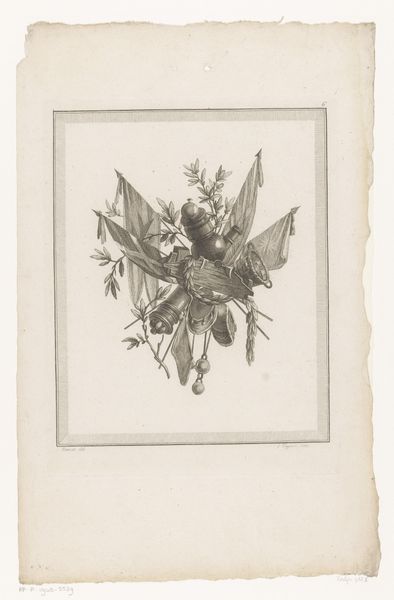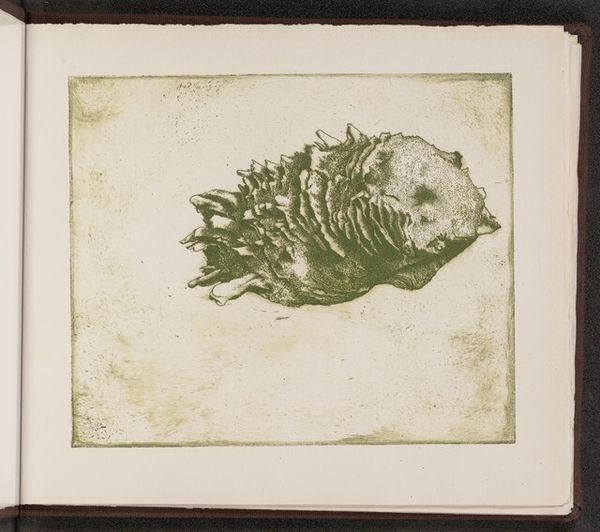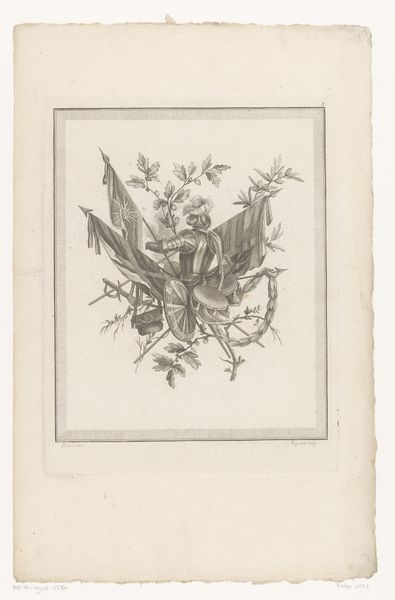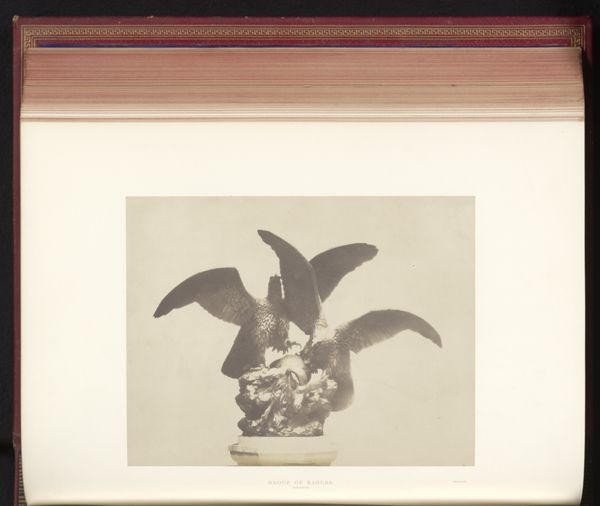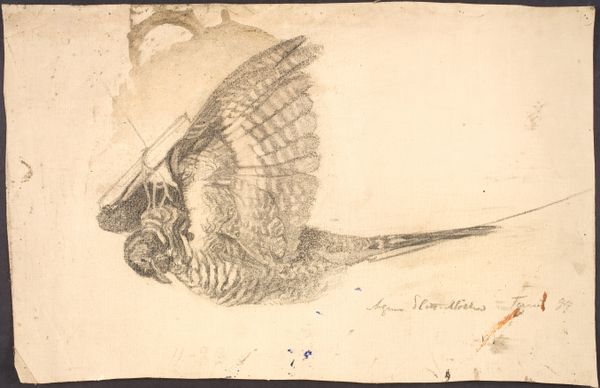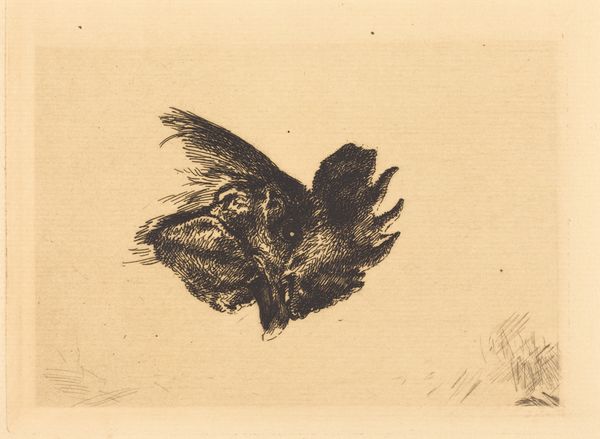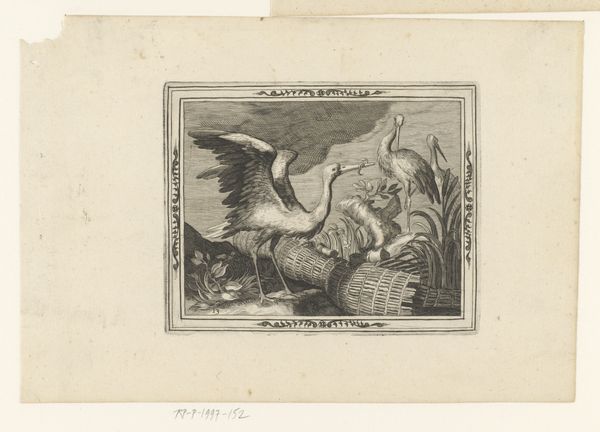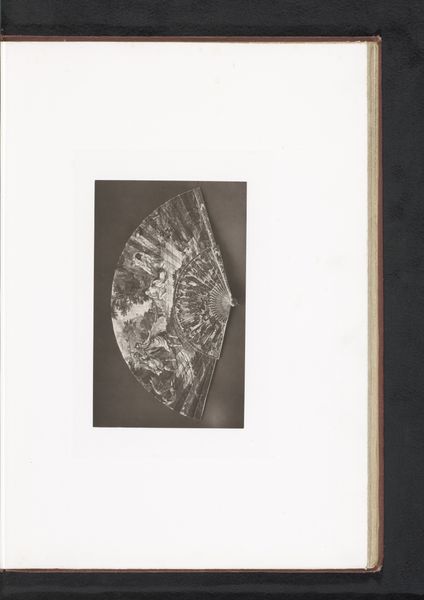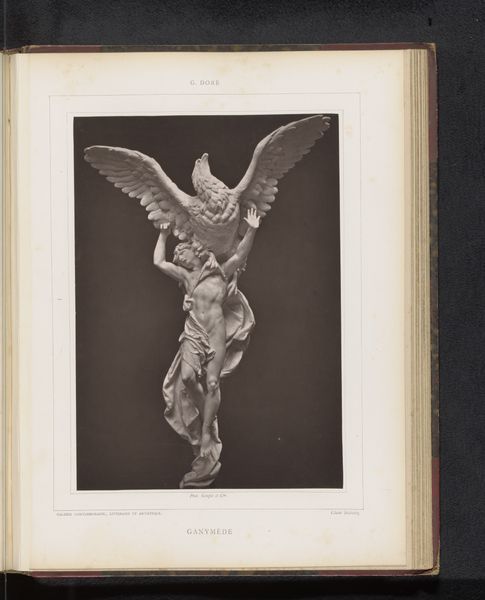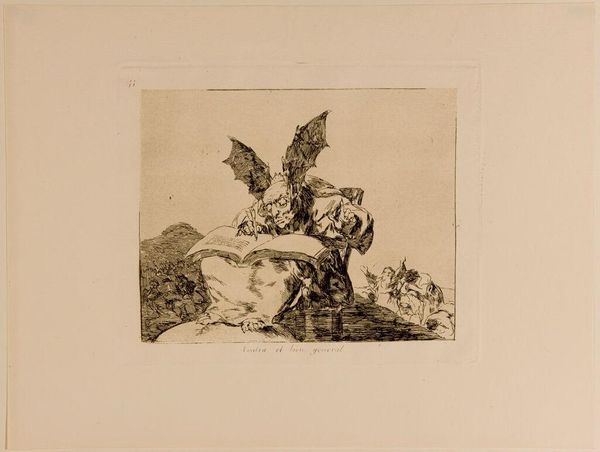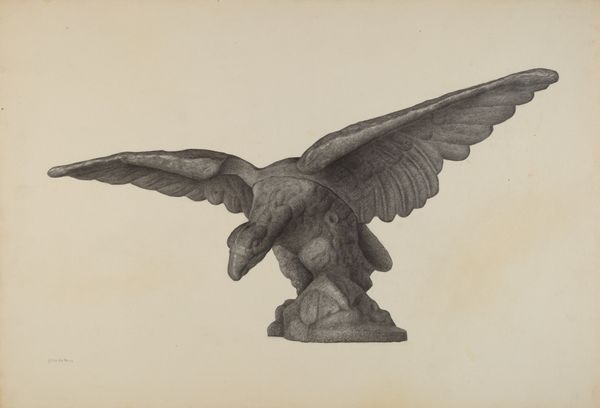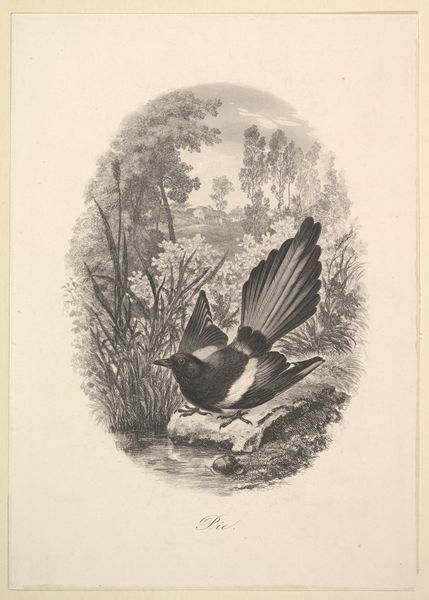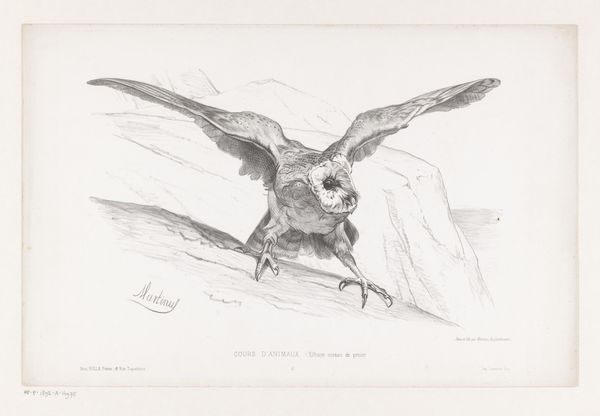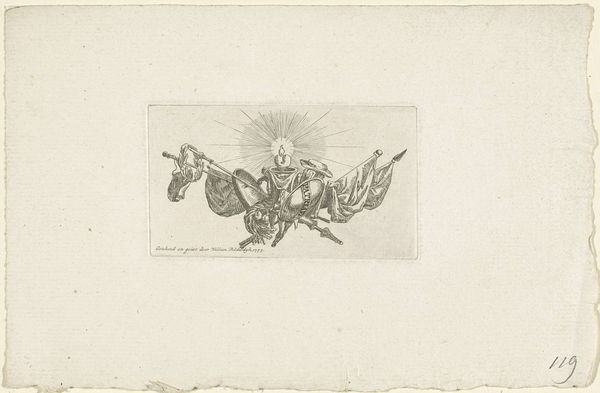
Havik en een reiger opgezet door John Hancock tentoongesteld op de Great Exhibition of the Works of Industry of All Nations van 1851 in Londen 1851
0:00
0:00
photography
#
still-life-photography
#
photography
Dimensions: height 180 mm, width 226 mm
Copyright: Rijks Museum: Open Domain
Curator: What a striking image, a veritable drama frozen in time. This is a photograph from 1851 titled, "Hawk and Heron Stuffed by John Hancock, exhibited at The Great Exhibition." Editor: It has a ghostly air. All that sepia softens what could be quite brutal-- a hawk overpowering a heron. The composition itself is strangely beautiful, despite the subject. Curator: Absolutely, and it's interesting to think about the context of the Great Exhibition. Think about what the exhibition represented - a celebration of industrial progress and empire and consider this still-life as both scientific study and spectacle of natural selection and competition in free trade ideology. Taxidermy as theatre. Editor: Taxidermy as theatre...yes! I keep thinking about that stage. The way the wings are posed gives it almost balletic energy, though the heron's poor plumage suggests a less graceful finale. Is it the romance of decay perhaps that speaks to me? Curator: Think also of the labor and skill required to create such lifelike mounts. Someone had to hunt, stuff, and then arrange these creatures. We’re also engaging with scientific illustration alongside artistry. How would these photographic "illustrations" have contributed to discourses of production at the time? Editor: That human intervention, that precise craft...it does complicate the ‘natural’ aspect, doesn't it? Perhaps the beauty lies in that very tension—nature captured, controlled, then subtly embellished, or distorted depending on one's view. The consumption of art in the victorian context feels extremely distant today, doesn't it? Curator: Precisely. It makes me reflect on how our contemporary understanding of art is divorced from an examination of labour; how industrial and scientific practices are intertwined; and how objects exhibited natural history displays promoted not only entertainment but also reinforced prevailing social hierarchies and attitudes towards both the natural world and labor. Editor: And isn’t it strange to be discussing life and death, artistry and manufacture, with such detached observation? It mirrors, in a way, the act of taxidermy itself, a sort of permanent, unsettling study of existence.
Comments
No comments
Be the first to comment and join the conversation on the ultimate creative platform.
